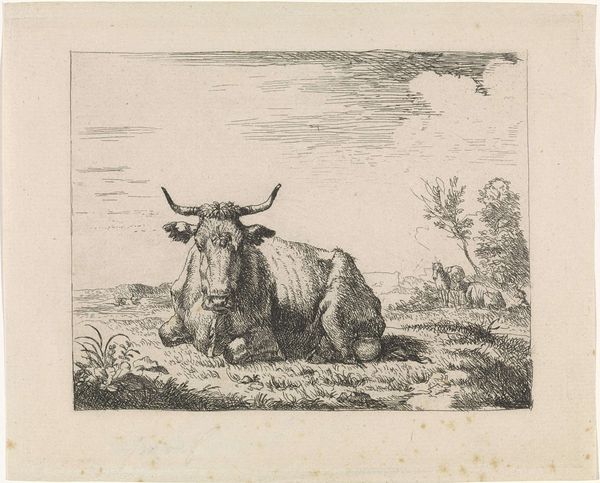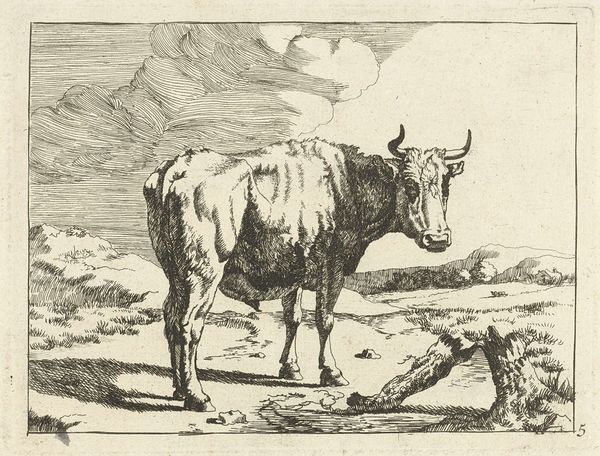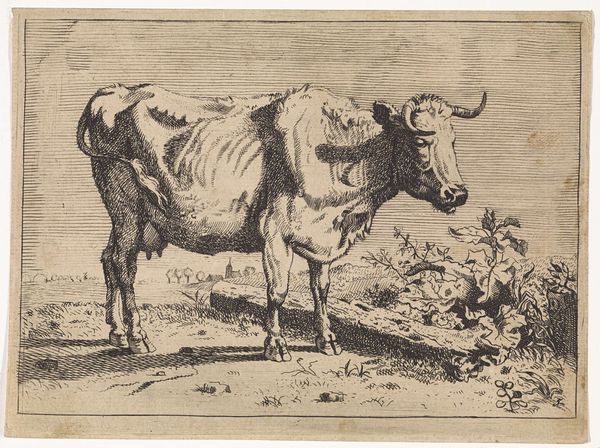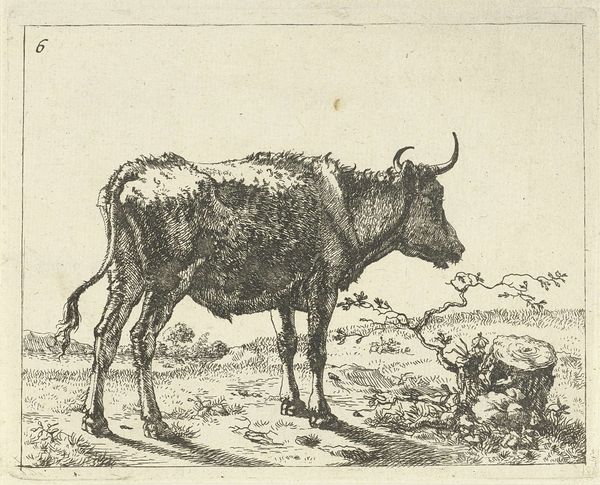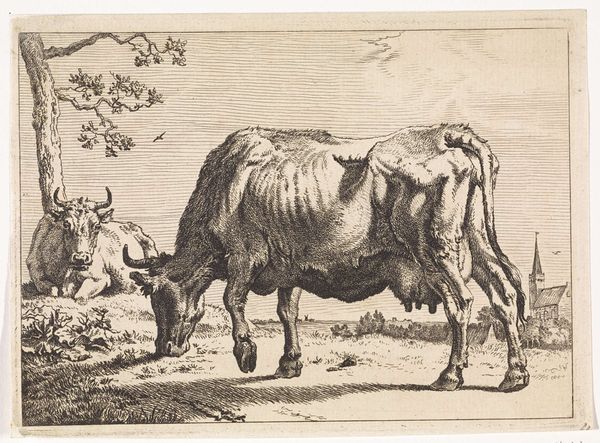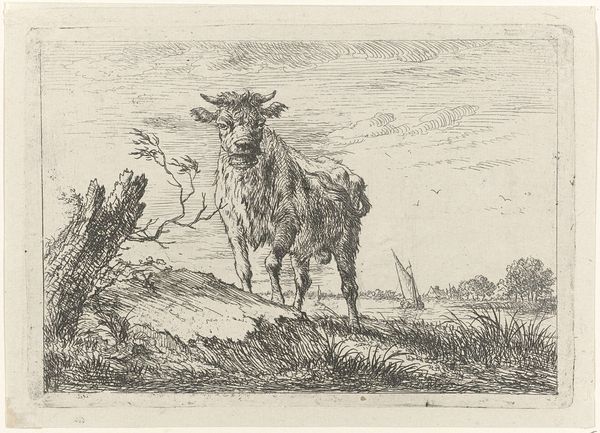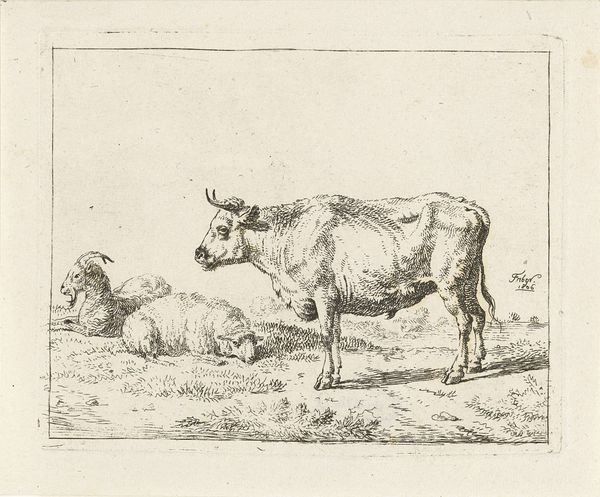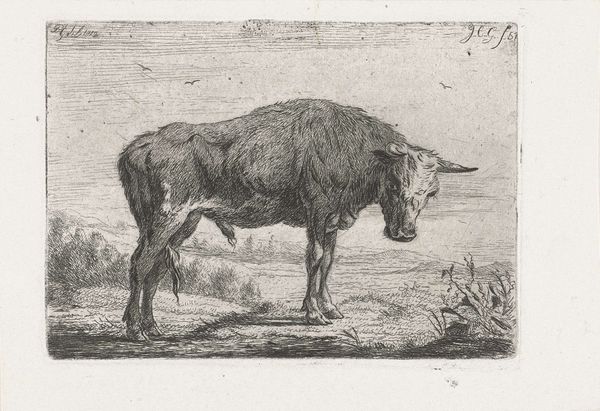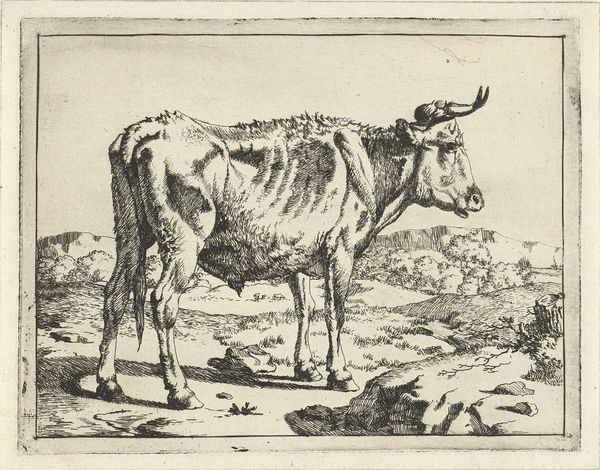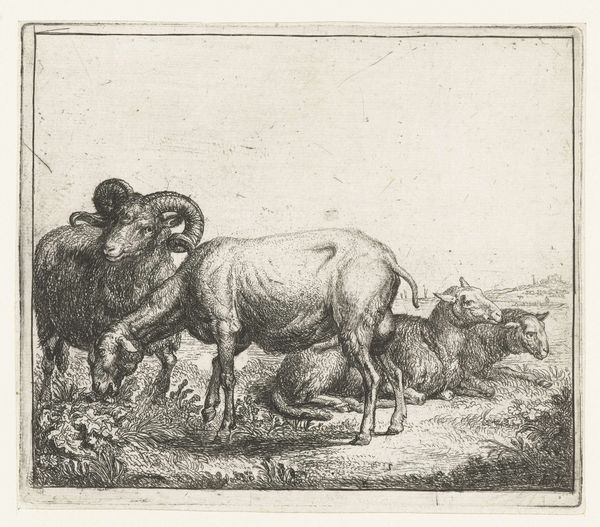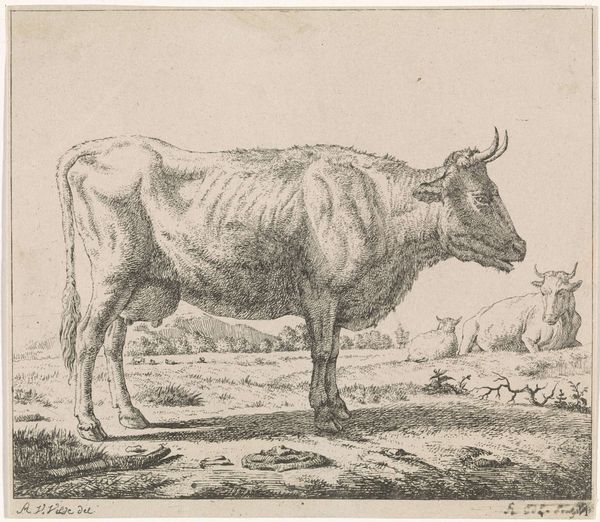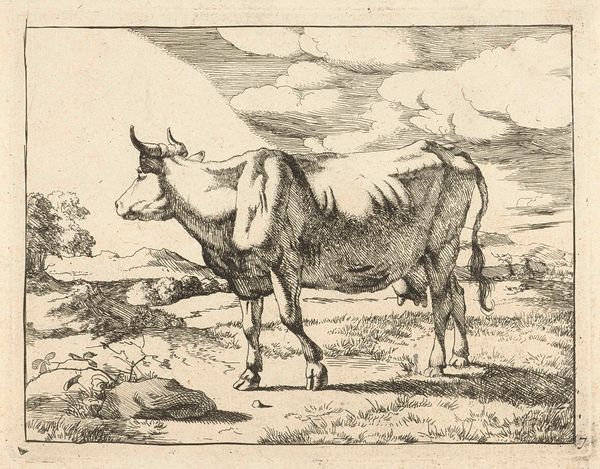
engraving
#
dutch-golden-age
#
pen sketch
#
pencil sketch
#
landscape
#
genre-painting
#
engraving
Dimensions: height 119 mm, width 150 mm
Copyright: Rijks Museum: Open Domain
Adriaen van de Velde made this print of a resting cow using etching, a printmaking technique, sometime before his death in 1672. The stark lines that define the animal's bulk and the pastoral scene were created by drawing through a wax ground on a metal plate, then bathing it in acid. Van de Velde shows real mastery of the medium. The etched lines create texture, weight, and form. The contrast between dark and light areas gives the cow a sense of three-dimensionality, a kind of sculptural presence. Etching was a relatively new medium in the 17th century, a more democratic alternative to engraving, which required laborious skill. Its accessibility meant that artists like Van de Velde could create and distribute images widely. Consider the broader context. This was the Dutch Golden Age, and cattle were a source of national wealth. The artist elevates this animal into a symbol of prosperity. By exploring the work’s material processes, we realize how art, labor, and commerce intertwine, challenging any divide between the fine and applied arts.
Comments
No comments
Be the first to comment and join the conversation on the ultimate creative platform.
